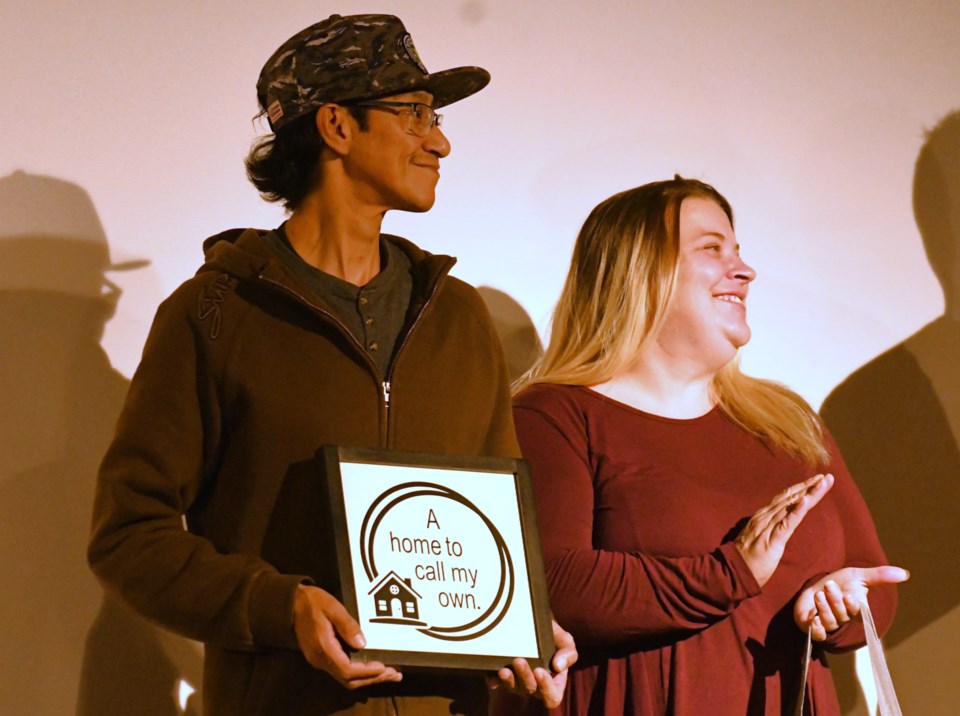MOOSE JAW — The Moose Jaw Public Library hosted the premiere of “A Home to Call My Own,” on Nov. 17.
Frankie Christensen played a key role in the film and shared a few words about his journey to recovery after the viewing.
“I just give back, mostly because we need a voice. They need a voice,” Christensen said. “Who better than somebody who has been through (homelessness and addiction) and has overcome it?”
“A Home to Call My Own” was produced by Square One Community Inc. and the John Howard Society with the goal of addressing myths surrounding unhoused individuals in Moose Jaw.
For Christensen, the journey from homelessness and addiction to recovery began at the age of 17.
“I was homeless first, then I went through a lot of mental health issues — depression mostly,” he said. Christensen’s depression spiralled further after facing a number of deaths in his family.
“I started not to care about anything and got deeper and deeper into the drug scene trying to cope. At the same time, I just lost everything,” he said. “The hopelessness was what got me in the end.”
He described homelessness as an isolating and dehumanizing experience. Without community support, he explained, it’s easy to spiral into despair and lose not only possessions but also self-respect, confidence, and the ability to connect with others.
“Without that support you can’t do anything, right, because you can get inside your own head. You can stay there. The decision to get up and do something about it has to come from community,” he shared. “You can’t look people in the eye; you go to a very dark… lonely place (where) you don’t think anybody cares.”
Christensen’s recovery began when workers at the John Howard Society offered a helping hand, honest work, and his first place to stay since –°¿∂ ”∆µ homeless.
“I (recovered) with a lot of support. I had a friend who asked me if I wanted to go to detox,” he recalled. Prior, Christensen was virtually ignored by society. “Even one person asking me if I needed help (could have started my path to recovery), but not one person noticed that I needed it.”
It didn’t happen overnight, but Christensen was determined — and received invaluable support — to take every needed step. “I made a decision that, no matter what happened, I was going to try harder. I wasn’t going to let this part of me be defeated.”
Over time, Christensen restored his self-confidence, learned to manage appointments and paperwork, found housing, and returned to treatment when he felt at risk of relapse. Today, he’s preparing to live independently again.
“And that journey I wouldn’t trade for anything; I wouldn’t want to go back.”
Christensen came to be involved with “A Home to Call My Own” after –°¿∂ ”∆µ approached by Square One and the John Howard Society. “It was humbling to see myself up there (on the screen)… (and) I’m happy with how it came out.”
Christensen believes . “You can always tell when people are doing better, right? That cup of coffee in the morning, that meal, or that shelter to go to — it makes a world of difference.
“That’s what it’s all about, because we’re a community. One thing affects all of us.”
Now Christensen plans to keep giving back, embracing the organizations who helped him out, and hasn’t forgotten those who are still out there on the streets.
“I’m really proud today to call myself a Moose Javian. I’ve seen this whole community come together… That’s what I think community is: They can accept you, and you are a part of something. You’re not outside looking in,” he said.
“What we talk about in the film is what really goes on,” he added. If (viewers) just took a minute to look around, (they would) see that these are people. These are real people.
“It could be your brother, your sister, your son, your relatives. It could be (any) one of those people. Until you look at it from that point of view, then you’re not going to really notice, right?”
“A Home to Call My Own” can be viewed at .




